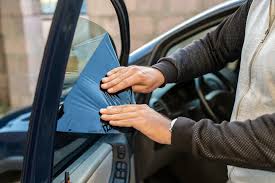There’s something undeniably sharp about a car with perfectly tinted windows. That sleek, shaded glass doesn’t just elevate the look, it makes driving more comfortable by cutting harsh sunlight, reducing glare, and keeping cabin temperatures cooler. For many drivers, tinting feels like a no-brainer. But tucked behind that stylish upgrade is a maze of state-specific laws, and navigating those regulations is just as important as choosing the right tint percentage. Knowing the rules surrounding window tint can prevent issues with inspections or unexpected stops, especially when it comes to a tint exemption in Oklahoma or similar guidelines in other regions.
The Appeal Behind Window Tinting
It’s easy to understand the rising popularity of window tinting. Whether it’s about protecting the interior from UV damage or adding a bit of privacy during daily commutes, the benefits are layered. Beyond aesthetics, tinting offers:
- Reduced heat inside the car during warmer months
- Less glare from sunlight or headlights
- A barrier against UV rays that fade upholstery and damage dashboards
- Additional protection from shattered glass in accidents
- Increased privacy from outside observers
The trouble begins when those benefits bump against legal restrictions that aren’t always clearly explained by tinting shops or vehicle owners.
Why the Laws Exist in the First Place
The purpose behind tint laws is rooted in public safety. Overly dark windows can make it difficult for law enforcement to see inside vehicles during traffic stops, potentially putting officers at risk. It can also compromise visibility for the driver, especially at night or in low-light conditions.
Each state has its own idea of what “too dark” means. These limits are based on VLT, or Visible Light Transmission percentage, the amount of visible light that must be able to pass through the tinted glass. A higher VLT means lighter tint. So a 70% VLT is very light, while a 20% VLT is significantly darker.
What the Law Says About Window Tinting
Every state has distinct rules that apply to different windows on a vehicle. The front side windows, rear side windows, and back window are often treated separately. Windshields generally can’t be tinted beyond a small strip at the top, though exceptions do exist.
In most places, tinting laws include:
- Maximum tint darkness allowed
- Maximum reflectivity permitted
- Rules on side mirrors (if back windows are tinted)
- Restrictions on color (some states ban red or amber tints)
- Exemptions for medical or sensitivity reasons
Knowing these details ahead of time can prevent an awkward conversation with law enforcement, or worse, a fine or forced removal of tint.
Understanding Tint Exemptions
Some drivers may qualify for a tint exemption in Oklahoma or in other states if they have a legitimate medical condition that requires additional protection from sunlight. Conditions like lupus, photosensitivity, or skin cancer often fall under this category.
Obtaining an exemption typically requires:
- A signed statement or prescription from a medical professional
- Submission of paperwork to the state’s DMV or similar agency
- Application of a sticker or certificate to the vehicle verifying exemption
Even with an exemption, some states still require that window tint not exceed a certain darkness level. Always read the fine print and check the expiration of your documentation.
How to Find Out What’s Legal in Your State
There’s no one-size-fits-all rulebook when it comes to tinting. In California, for example, the front side windows must allow over 70% of light in. Meanwhile, Florida permits as low as 28% for front side windows. The variation is significant, and ignorance won’t win in court.
A few reliable ways to check include:
- Visiting your state’s Department of Motor Vehicles website
- Contacting a licensed window tinting professional in your area
- Checking with your mechanic or auto inspection center
- Reading up on legal databases that list state-by-state tinting regulations
Some local shops will perform a VLT test before applying a new tint to make sure the final result stays within legal boundaries.
What Happens When You Break Tint Laws
Breaking tint laws might not seem like a serious issue, but it can lead to:
- A fix-it ticket, requiring removal or replacement of tint
- A fine that escalates if ignored
- A failed annual or bi-annual vehicle inspection
- Suspension of driving privileges in extreme cases
In some states, repeat offenses come with harsher consequences, even affecting insurance rates. Most of the time, law enforcement officers will use a tint meter to measure the VLT level during a traffic stop. If it’s out of spec, the consequences can be immediate.
Tips Before Tinting
Before heading to the tint shop, it helps to ask a few important questions:
- Is the film brand certified for use in your state?
- Will the tint shop provide you with documentation or a compliance sticker?
- Does your state require a tint certificate kept in the vehicle?
- Are there special allowances if the car was purchased out-of-state?
Being proactive saves time and money later. The goal is to enjoy the benefits without worrying about the legal consequences.
Medical Conditions and Window Tint: What to Know
For those considering a tint exemption due to a medical condition, the key is proper documentation. Keep in mind that law enforcement may still stop a vehicle if the windows appear darker than usual, so having proof on hand makes a difference.
Some tips:
- Store copies of medical certification in the glovebox
- Place any required decals or identifiers in the correct location
- Understand any limits to your exemption (some states cap the darkness, even with permission)
- Renew the documentation if required annually
Laws often change, so staying informed through your state DMV is worth the occasional check-in.
Don’t Rely on Out-of-State Rules
Just because a certain tint level is legal in one state doesn’t mean it travels well. Drivers who frequently cross state lines should understand how laws vary, especially when it comes to VLT percentages and reflectivity.
For instance, a tint job that’s perfectly legal in Arizona might be illegal the moment the car crosses into New York. When moving to a new state, it may be necessary to adjust the tint to meet local regulations, even if the installation was compliant in the previous location.
Final Thoughts: Looking Good, Staying Legal
Tinting adds real value to the driving experience, comfort, privacy, style, and protection all wrapped into one sleek upgrade. But it’s a move that comes with rules, and those can vary more than most expect. Whether applying fresh tint or double-checking the legality of what’s already installed, a little research goes a long way.
From Style to Safety: Navigating the Legal Limits of Car Window Tinting isn’t just about aesthetics or comfort. It’s about doing things right, knowing the law, and keeping that polished look without compromising road legality. It’s surprisingly easy to get caught in technicalities, especially when unfamiliar with VLT numbers or enforcement policies.
Every driver wants a vehicle that turns heads, in a good way. Staying legal ensures that the only attention drawn is admiration, not a citation.











































































